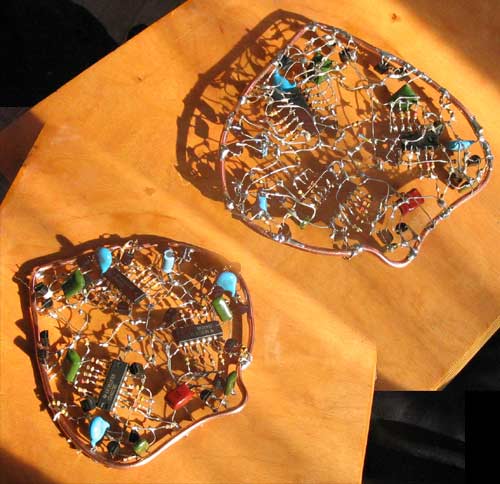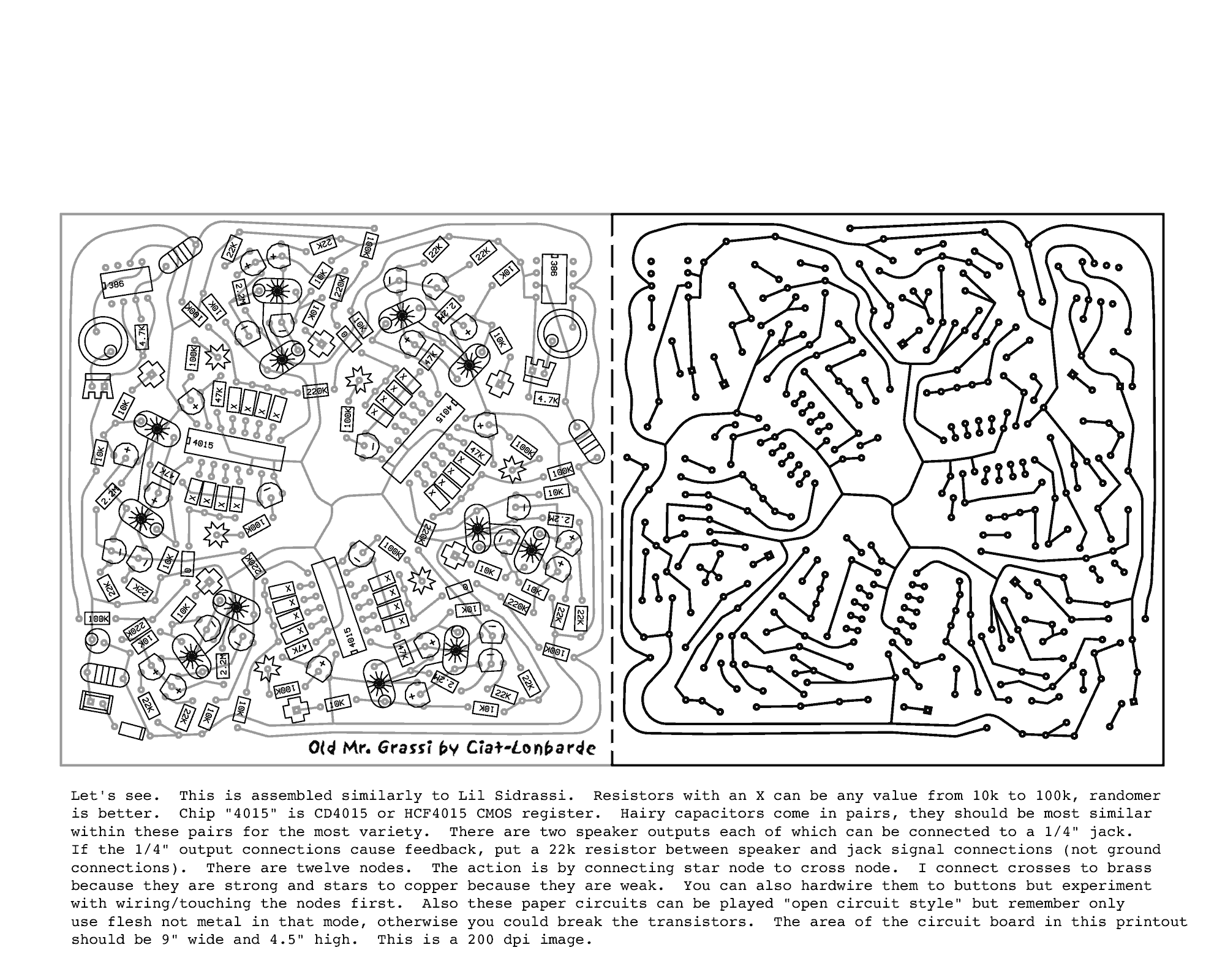Paper Circuits are rad, plus there are a ton of ways to approach them!! Why need a traditional circuit board or breadboard when you can simply stick components through paper and solder them in place!!! Use solar cells, 9v batteries, keep it child friendly, and be as creative as you want!
No solder, no problem.
Hardcore DIY Musical Instruments as fun paper circuits
Paper circuits have two mirrored sides, printed adjacent, with a fold line in the middle. A piece of card moistened with glue is inserted between the folded sides. The top side indicates where to pierce by needle and where to then thread components, such as resistors, capacitors, and chips. On the underside, lines trace how to weave the component leads together for soldering. It is a quick way to craft a sketch of a circuit, but it also serves as a platform for studying crossed or circuit-bent nodes. Component connections form metallic islands, usually kept insulated from each other. The paper leaks some electrons between these islands, which may influence the purity of electronic sounds. Another unusual design implication of paper circuits arises from the organic nature of the paper, which spreads electronic influence among nodes. The “official” circuit can be described in the schematic, but, once built, the paper introduces many unofficial connections between each of the nodes. -from Peter Blasser's section of Homemade Electronic Music
- Get the paper circuits straight from Blasser's website

- These paper circuits serve as a basis for the beautiful instruments of Ciat Lonbarde, but tons of other companies and products have emerged from this space over the years. This is just one example of paper circuits produced at an incredibly high level! 4ms is another successful modular synth company that began on paper circuits, which can still be found with some digging on the web.
Run your paper circuits off of solar cells, or whatever!!! Think of it as a functional art project. Who cares about being practical, when the goal is just to have fun! Got a favorite paper circuit? Share it with us!




